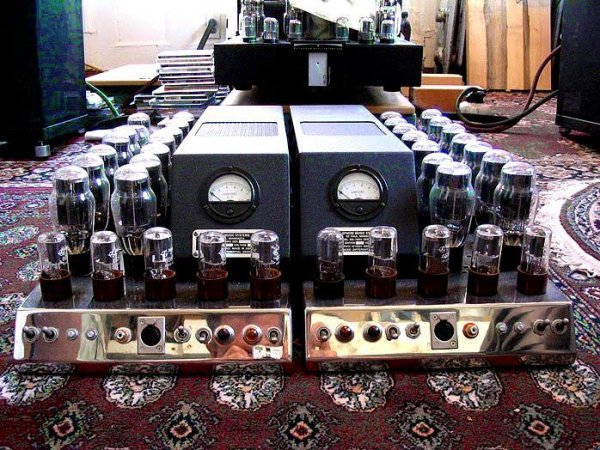Hi
People .. We, audiophiles are so prone to overstatements and the thread fits the mold. A person with basic or advanced electrical knowledge may be able to repair Tube equipment more easily than SS. I have no doubt. For most audiophile however their electrical knowledge stops at reading voltage from a multimeter. So regardless of the amp they use Tube or SS, a malfunction that goes beyond changing a fuse or a tube equate with shipping, often after lengthy phone calls with the manufacturer.
Today SS seem to be more reliable than tubes. I have no number to back that assertion, perhaps some facts would have me review my position. I moved to SS relatively late in my audiophile life and I can tell you that I have had fewer problems with SS than tubes which I found finnicky and temperamental, although I never had any major blow-up with tubes equipment (VTL, CJ, Quicksilver, Jadis, Dynaco, Audible Illusions, Counterpoint, etc). Anyone with numbers to back their point is welcome.
To go back on topic , I have a fondness for OTL, if I were to move toward tubes ever again it would be OTL, they seem to me the more "universal" type of tubes amplifer and in my experience they more than any other tubes amps can drive drive strange loads. I remember a friend drove his Sound LAb to excellent results with Atmasphere while many SS the other side of Krell Class A monsters were struggling with it ... I also heard an OTL driving a Magnepan and it was the best I heard from that maggie, of course Maggie are polite loads but to extract serious bass and coherence from Maggie require serious, read high power from tubes, 300 wats and up .. the OTL was a 100 watts or 80 watts... The MA-3 measurements by the way are very good and the technology , rather unique: Built-in tube tester, the Atmasphere OTL implementation, the Power supply, etc, one can only be admirative. And if this amp sounds like a more powerful and refined MA-2, it is destined to walk over several well regarded tubes amplifers sporting similar tag prices. It remains however that the logistics of this MA-3 amps, even for those who can afford it are daunting, from the Heat generated by 84 tubes to the very large footprint and likely the AC current draw. So it can be a difficult amp to deal with even for many who could sign the check and not even have a zero come out of their balance account

P.S. I would welcome in passing a move toward a more balanced discussion atmosphere. Pushing point of views that are only based on beliefs will not help fellow audiophiles. Points that can be substantiated with repeatable experiences or maybe numbers do. They allow all of us to better our system henceforth our enjoyment of music... Lately It has become too much my faith againt yours, often at the cost of Logic and Science. It seems that once a person makes apoint it is difficult to back from it or to amend it, logic and common sense be damned! We do need those two to unersand each other and to progress.. We certainly don't want the forum to become an echo chamber, which is what faith-based behavior leads to.

















